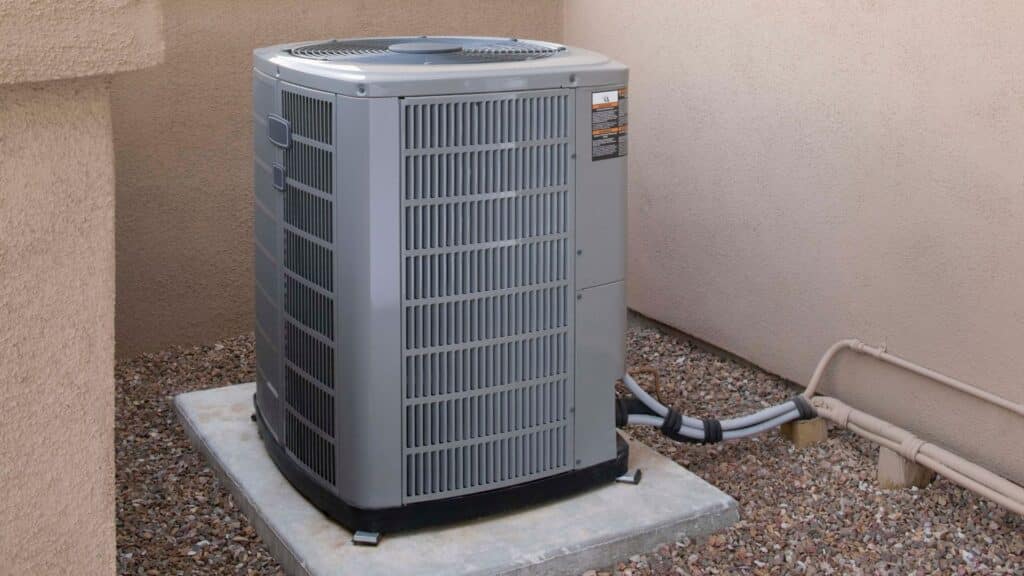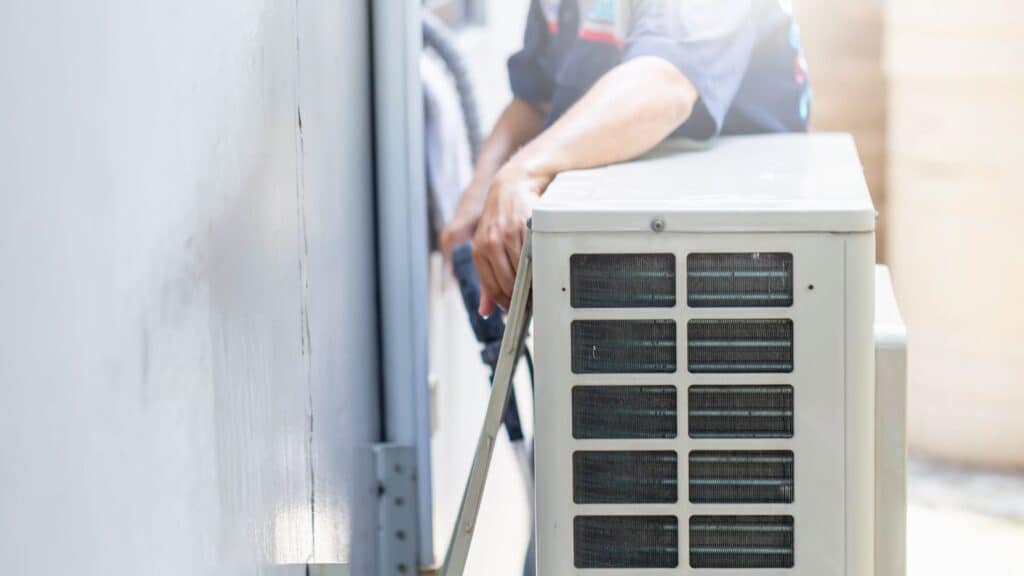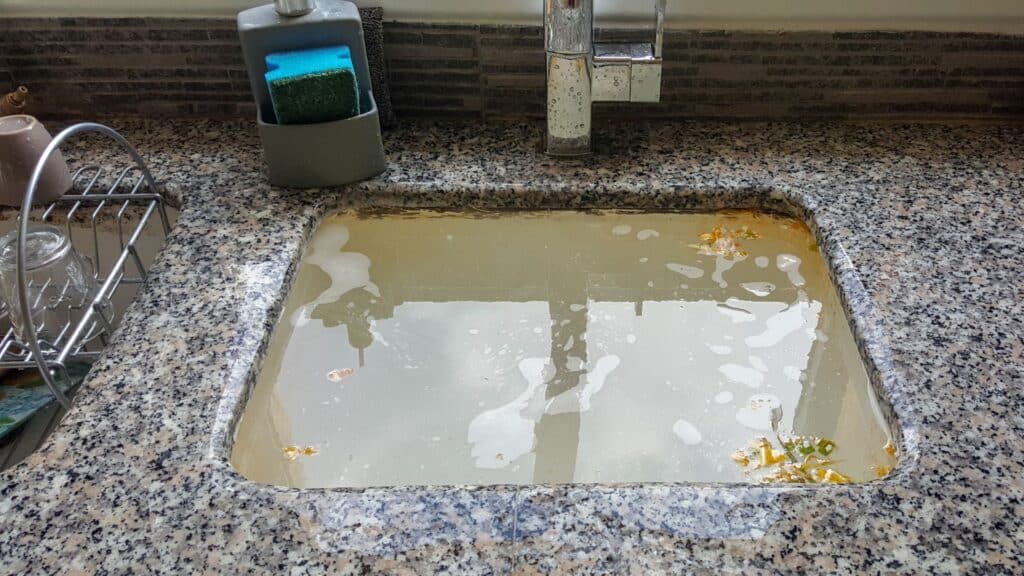Your air conditioner is running, but it’s not cooling your space. You’re left wondering why.
The culprit could be your AC’s fan motor.
Fan motor issues are a common cause of air conditioner problems. They can lead to your AC unit working overtime, but not effectively cooling your home.
Understanding these issues can help you diagnose problems early. It can also guide you when to call for professional help, such as from AAA Heating and Plumbing.
In this article, we’ll delve into the world of fan motor issues. We’ll explain how they can affect your air conditioner’s performance.
We’ll also provide insights into fan motor repair and replacement. Plus, we’ll offer tips on how to prevent these issues in the future.
So, if you’re ready to take control of your AC’s performance, keep reading. This guide is for you.

Understanding Your AC's Fan Motor
The fan motor in your AC is a vital component that keeps air circulating. It pushes air across evaporator coils, cooling it before distributing it throughout your home. Without a properly functioning fan motor, your AC cannot efficiently cool the air, compromising comfort.
This component is located in both the indoor and outdoor units of your air conditioning system. Each has a specific function: the blower motor in the indoor unit circulates cooled air inside, and the condenser fan motor in the outdoor unit helps release absorbed heat outside. Both need to work in harmony for optimal performance.
Fan motors come in different types, including single-speed and variable-speed. Single-speed motors operate at one constant speed, while variable-speed motors adjust their speed for greater energy efficiency. Understanding which type you have can help in identifying potential issues.
If the fan motor is experiencing problems, it can lead to a host of other complications. Weak airflow, increased energy bills, and uneven cooling are all indications that something is amiss. It’s crucial to address these signs early to prevent further damage.
Knowing how a fan motor works and its role in the cooling process can empower you to spot issues. Whether you’re a DIY enthusiast or a homeowner, this understanding can save you time and frustration.
Let’s explore how this essential component operates within your AC unit and why it’s so critical to your comfort.
How a Fan Motor Works in an AC Unit
The fan motor’s primary function is to spin the fan blades. In doing so, it moves air over the evaporator coils in your AC unit. These coils are responsible for absorbing heat from the indoor air, and the fan motor facilitates this process by ensuring continuous airflow.
When the thermostat signals the need for cooling, it activates the fan motor. This starts the cooling cycle, drawing warm air over the coils, where refrigerant absorbs the heat, cooling the air. The cooled air is then pushed back into your living space, providing comfort.
Modern AC systems often use brushless motors for improved efficiency. These motors offer smoother operation and longer lifespan, thanks to reduced friction and lower wear and tear. They are a popular choice for new installations due to their energy-saving capabilities.
The efficiency of the fan motor directly impacts the effectiveness of the cooling process. If the motor fails to perform its task correctly, it can lead to subpar cooling and increased energy usage. Understanding its operation aids in diagnosing potential issues early.
The Role of the Fan Motor in Cooling
The fan motor is integral to maintaining a comfortable indoor temperature. It ensures that air circulates efficiently through the system, contributing to even cooling across all rooms. Without it, hot spots can develop, leading to uneven temperature distribution.
Additionally, the fan motor aids in dehumidification, an important aspect of air conditioning. As air passes over the cold coils, moisture is removed, and the fan motor helps distribute this drier air throughout your home. This not only cools but also enhances air quality and comfort.
Failure of the fan motor can cause your AC unit to work harder, leading to higher electricity bills. Without efficient air movement, the system’s cooling capabilities are severely limited, resulting in a less comfortable environment and potential stress on other parts of the system.
In summary, the fan motor’s role extends beyond simple air movement. It’s crucial for efficient cooling, energy consumption, and indoor air quality. Maintaining its health is key to ensuring your AC system runs smoothly and effectively.
Common Signs of Fan Motor Issues
Identifying fan motor issues early is crucial for maintaining your AC system. These problems often manifest through various symptoms, signaling the need for attention. Prompt action can prevent more significant damage and costly repairs.
Several signs indicate potential fan motor issues. These include unusual noises, weak airflow, and the absence of air from your vents. Pay close attention to these symptoms as they can reveal much about the condition of your AC’s fan motor.
You might also notice increased energy bills. A struggling fan motor has to work harder to achieve cooling, thereby consuming more electricity. Another red flag is uneven cooling, where some parts of your home are cooler than others.
Below is a list of common symptoms that could point to fan motor problems:
- Unusual noises from the AC unit
- Reduced airflow from vents
- No air circulation despite the AC running
- Spike in energy costs
- Uneven cooling in various rooms
- The AC system frequently cycles on and off
Recognizing these signs ensures timely intervention. You can either troubleshoot the problem yourself or call a professional. Understanding what to look for can save you time and money, preventing further complications.
Let’s delve deeper into two of the most prevalent indicators: unusual noises and weak airflow. Understanding these can help you pinpoint issues sooner.
Unusual Noises and Weak Airflow
Unusual noises from your AC often signal fan motor issues. Sounds like grinding, rattling, or squealing indicate the motor is under strain. These noises can result from components misaligned or worn, like the bearings or the fan blades themselves.
Weak airflow is another common sign. If the motor does not run at optimal speed, it cannot push enough air through the system. This results in poor air circulation, making it harder to maintain a consistent indoor temperature.
These two signs, noises and reduced airflow, frequently accompany each other. Addressing them promptly is vital. Ignoring these early warnings can lead to further damage not just to the motor but to other AC components as well, compounding the problem.
No Air from Vents and Other Red Flags
Unusual noises from your AC often signal fan motor issues. Sounds like grinding, rattling, or squealing indicate the motor is under strain. These noises can result from components misaligned or worn, like the bearings or the fan blades themselves.
Weak airflow is another common sign. If the motor does not run at optimal speed, it cannot push enough air through the system. This results in poor air circulation, making it harder to maintain a consistent indoor temperature.
These two signs, noises and reduced airflow, frequently accompany each other. Addressing them promptly is vital. Ignoring these early warnings can lead to further damage not just to the motor but to other AC components as well, compounding the problem.
Diagnosing Fan Motor Problems
Diagnosing fan motor problems can seem daunting, but understanding the process helps. A systematic approach helps identify the root cause efficiently. Start by gathering information on the common signs you’re experiencing.
One of the key components involved is the capacitor. It powers the fan motor, helping it start and maintain operation. The capacitor is often a source of failure when an AC unit underperforms.
Next, consider checking the wiring and connections of the fan motor. Loose or corroded wires hinder performance. Conduct a visual inspection for any obvious issues, such as burned or disconnected wires.
Moreover, ensure the air filter is clean. A dirty filter restricts airflow and can strain the fan motor. Blockages in airflow reduce efficiency and increase the likelihood of motor failure.
Here’s a list of steps to help diagnose fan motor issues effectively:
- Listen for unusual noises like humming or buzzing.
- Check wiring connections to the motor.
- Inspect the air filter for blockages.
- Monitor the unit for frequent cycling on and off.
- Observe any peculiar smells, indicating electrical issues.
- Examine the circuit breaker for tripped switches.
Being proactive in diagnosing saves both time and cost in the long run. Recognizing these key indicators sets the stage for effective solutions.
The Capacitor's Role and Symptoms of Failure
The capacitor is crucial for your AC’s fan motor. It provides the initial energy boost to start the motor and maintain operational speed. Capacitor failure is a leading cause of fan motor issues.
Symptoms of a failing capacitor include a humming sound when the AC starts. Another sign is if the fan spins slowly or not at all. In severe cases, the capacitor might be visibly swollen or leaking.
Checking the capacitor involves specialized tools, so calling a professional is recommended. Technicians use multimeters to determine if the capacitor is holding the right charge. Replacing a faulty capacitor promptly restores the motor’s function.
Troubleshooting Steps for Homeowners
Before seeking professional help, there are simple troubleshooting steps you can take. First, power off your AC unit for safety. This prevents accidents and ensures you’re not working with live electricity.
Next, inspect the air filter. A clogged filter reduces airflow, impairing the motor’s efficiency. Regular cleaning or replacing the filter can resolve minor issues effectively.
If the problem persists, examine the thermostat settings. Ensure it’s set to the correct mode and temperature. An incorrect setting can cause the fan motor not to operate as expected. If these steps don’t solve the issue, professional intervention may be needed to avoid further damage.

When to Call the Professionals
Sometimes, fan motor issues require expertise beyond DIY fixes. Knowing when to call a professional can save you from further complications. Timely intervention ensures your AC system remains in good condition.
Professional services like AAA Heating and Plumbing provide expert diagnosis and repair. They offer peace of mind, ensuring the issue is fixed correctly the first time. Attempting repairs without proper knowledge can lead to costly damage.
Complex problems such as electrical issues or persistent noise often necessitate calling in experts. Professionals possess tools and experience to address these challenges effectively. A professional assessment ensures safety and efficiency.
Ignoring the need for expert help can worsen the condition. This might lead to complete system failure, forcing a costly replacement. Thus, it’s wise to seek professional advice when you’re uncertain about an AC issue.
Recognizing the Need for AAA Heating and Plumbing
AAA Heating and Plumbing is a trusted service for AC repairs. They specialize in diagnosing fan motor problems quickly and accurately. If your DIY efforts haven’t resolved the issue, it’s time to call them.
Their technicians are trained in handling complex AC issues, ensuring reliable service. With AAA, you’re guaranteed thorough inspections and quality repairs.
The Process of Professional Diagnosis
A professional diagnosis involves comprehensive testing of the AC unit. Technicians use advanced tools to assess the fan motor’s condition. They evaluate electrical systems and check for hidden issues affecting performance.
During an inspection, technicians will often discuss findings with you. This transparency helps you understand the problem. It also allows you to make informed decisions regarding repairs or replacements.
Fan Motor Repair vs. Replacement
Determining whether to repair or replace a fan motor requires careful consideration. Each option has its own benefits and drawbacks. Understanding these can help you make an informed choice that aligns with your needs and budget.
Deciding Between Repair and Replacement
When a fan motor breaks, the first decision is whether to repair it. Repairs can be cost-effective if the problem is minor. This option is typically quicker and less disruptive.
However, frequent failures or significant issues may indicate a need for AC replacement. A new fan motor can provide better reliability and efficiency. Replacing may also reduce the chance of future breakdowns.
Consider the motor’s age and performance history when deciding. Older units might warrant replacement for improved efficiency. Meanwhile, newer motors could benefit more from simple repairs.
Cost Considerations and Lifespan
Cost is a crucial factor in choosing between repair and replacement. Often, repair costs are lower than those for replacement. However, ongoing repair expenses can accumulate over time.
You should also weigh the motor’s expected lifespan. A new motor generally lasts longer than a repaired one. This potentially saves money on future repairs.
When considering a replacement, compare the energy efficiency of new models. Higher efficiency can lead to energy savings. Moreover, manufacturers frequently offer warranties on new motors, adding value to replacements.
To assist in your decision:
- Assess the frequency of required repairs.
- Evaluate the energy savings a new model offers.
- Consider the age and efficiency of your current motor.
Careful evaluation will guide you to the most cost-effective and lasting solution for your AC system.







